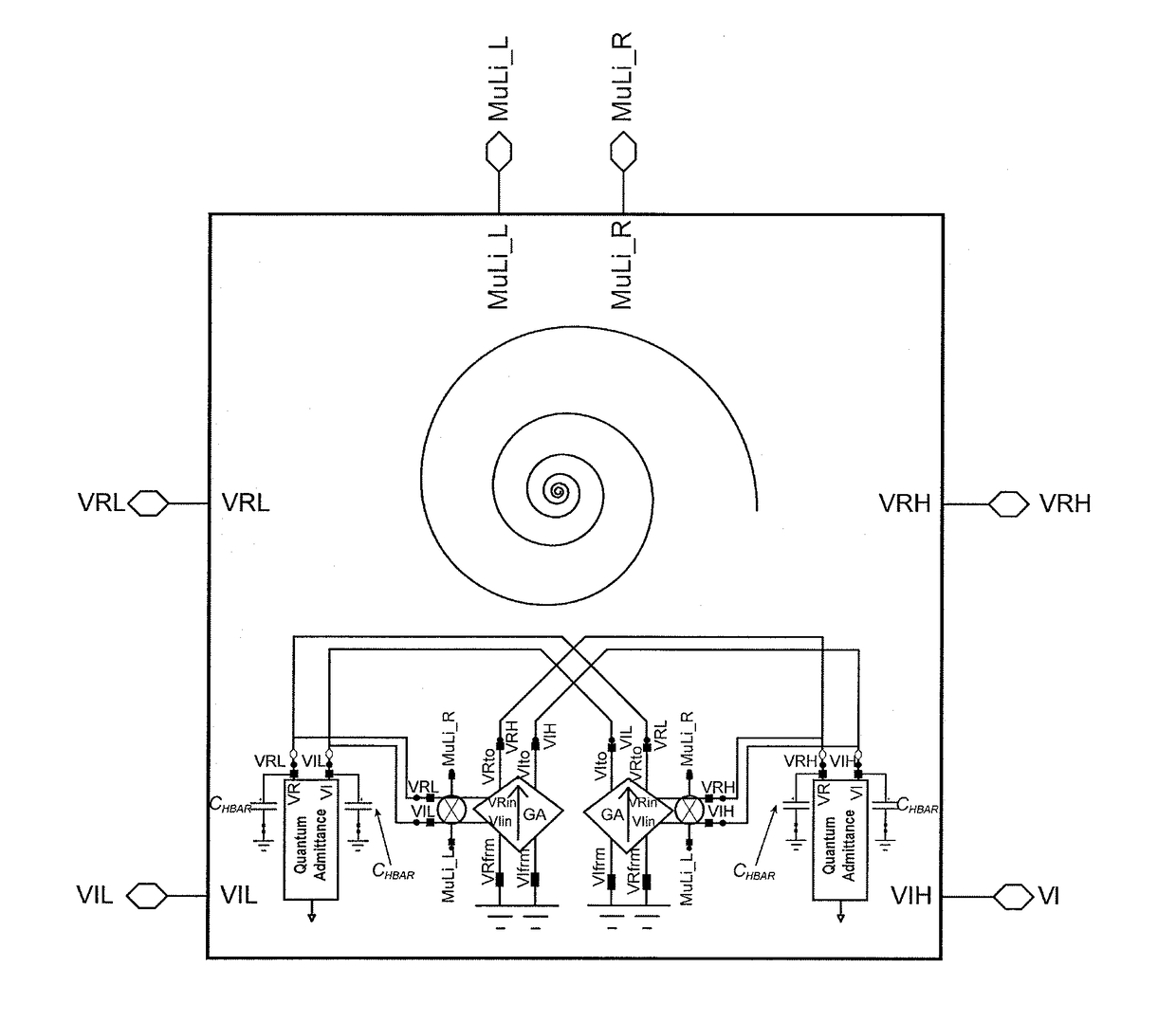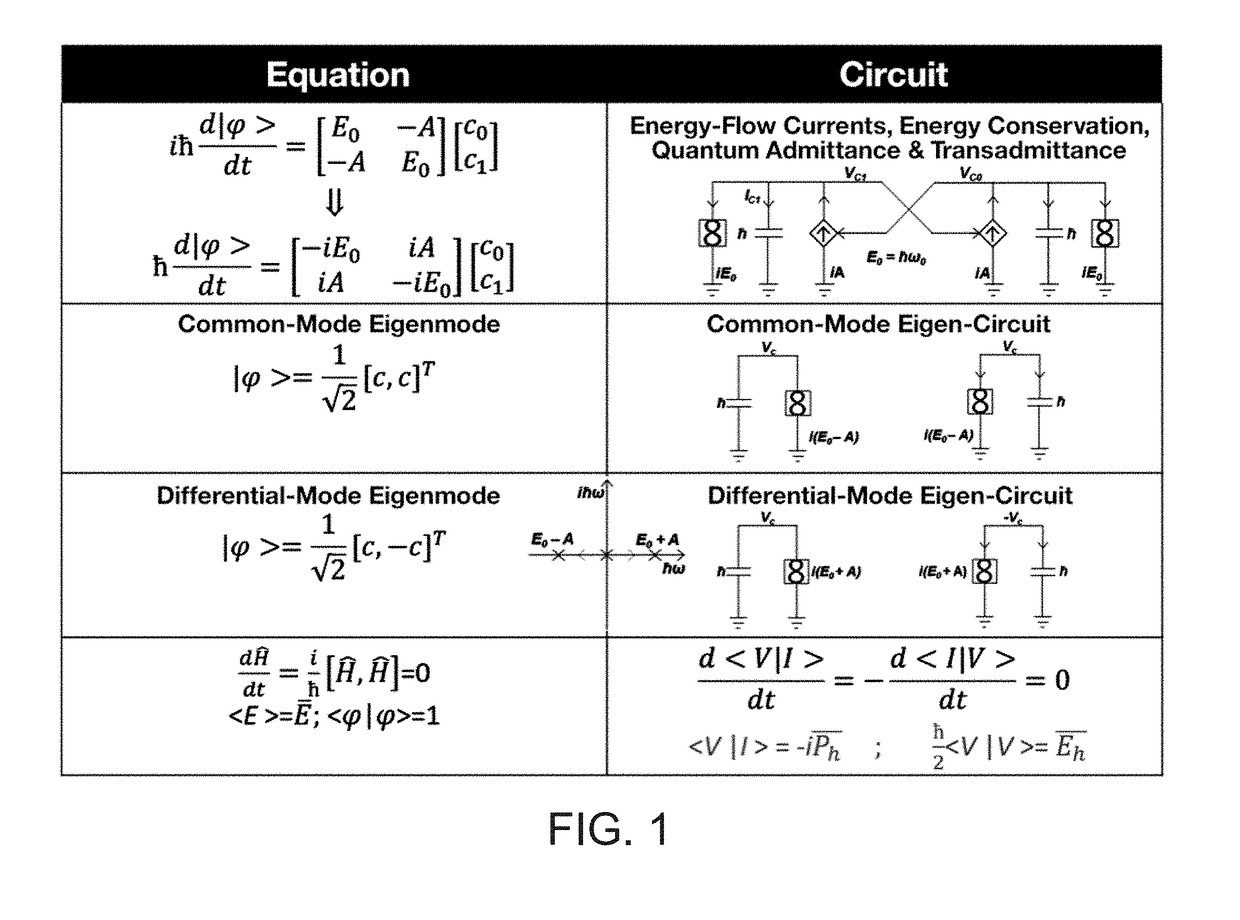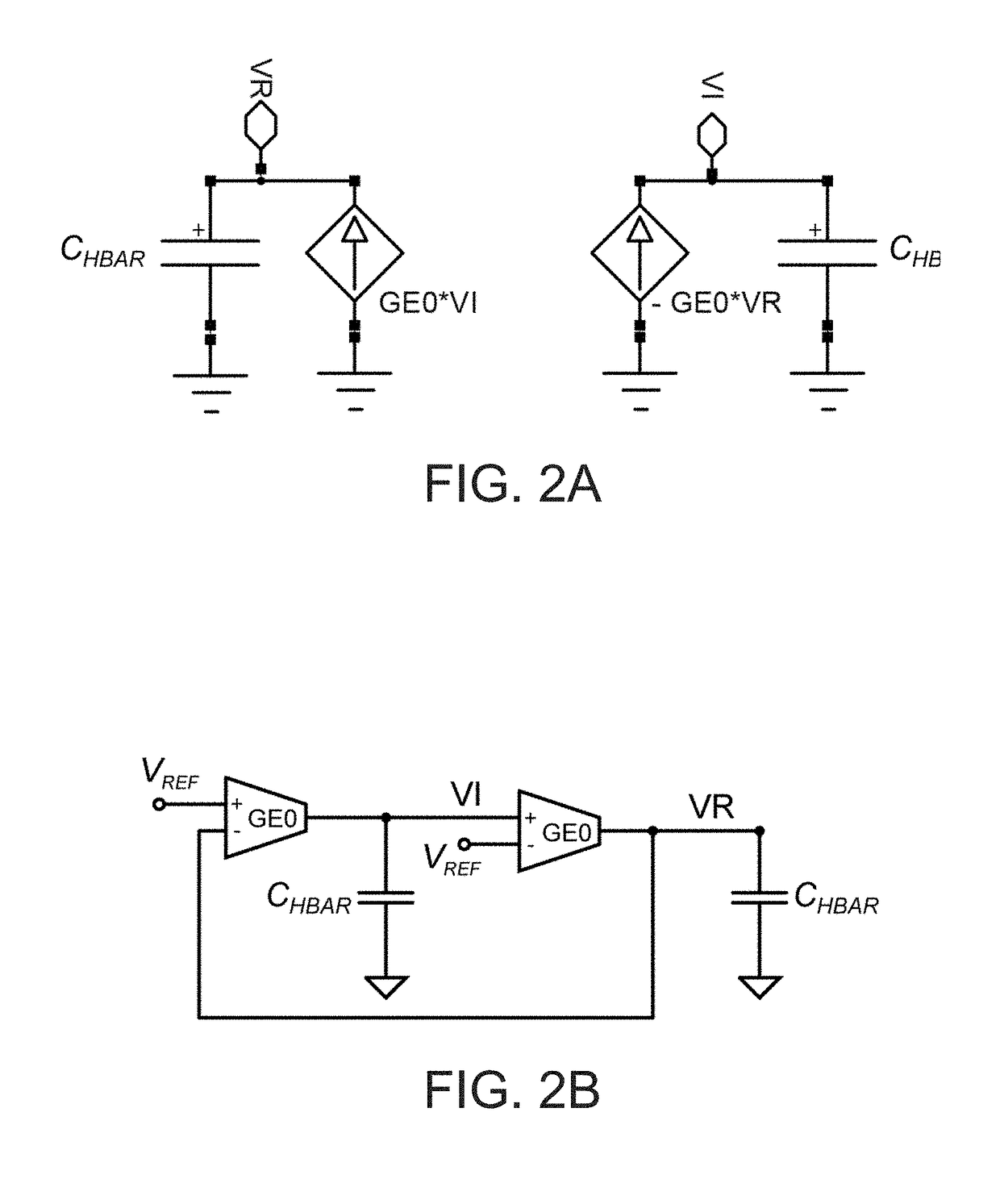Emulation of quantum and quantum-inspired dynamical systems with classical transconductor-capacitor circuits
a transconductor and capacitor circuit technology, applied in the direction of process and machine control, computation using denominational number representation, instruments, etc., can solve the problems of not having the capability to automatically represent and efficiently control, not having the capability to efficiently emulate stochastics, and not being able to practically create over an infinite frequency range as is needed
- Summary
- Abstract
- Description
- Claims
- Application Information
AI Technical Summary
Benefits of technology
Problems solved by technology
Method used
Image
Examples
Embodiment Construction
[0070]FIG. 1 begins illustrates how mathematical dynamics that govern quantum Hamiltonians can be mapped to analog circuit motifs, which are useful for their design, analysis, and emulation. Here, by dividing both sides of the equation by i, a two-state Hamiltonian, which is at the core of how many atomic, optical, and spin quantum systems function, is mapped to an equivalent analog circuit. The resulting probability-amplitude voltages Vc1 and Vc2, reactive energy-flow currents Ic1 and Ic2, two-terminal quantum admittance element (an admittance takes the ratio of current / voltage) with a squiggly ‘8’, and three-terminal diamond quantum trans-admittance elements (cross-current / voltage) then generate a quantum circuit that has no direct classical equivalent. The value of h is simply the value of the capacitor in the circuit; the quantum transadmittance appears to behave somewhat like a ‘transcapacitance’ with no classical equivalent. Moving the voltages, VC1 and VC2 up and down togethe...
PUM
 Login to View More
Login to View More Abstract
Description
Claims
Application Information
 Login to View More
Login to View More - R&D
- Intellectual Property
- Life Sciences
- Materials
- Tech Scout
- Unparalleled Data Quality
- Higher Quality Content
- 60% Fewer Hallucinations
Browse by: Latest US Patents, China's latest patents, Technical Efficacy Thesaurus, Application Domain, Technology Topic, Popular Technical Reports.
© 2025 PatSnap. All rights reserved.Legal|Privacy policy|Modern Slavery Act Transparency Statement|Sitemap|About US| Contact US: help@patsnap.com



